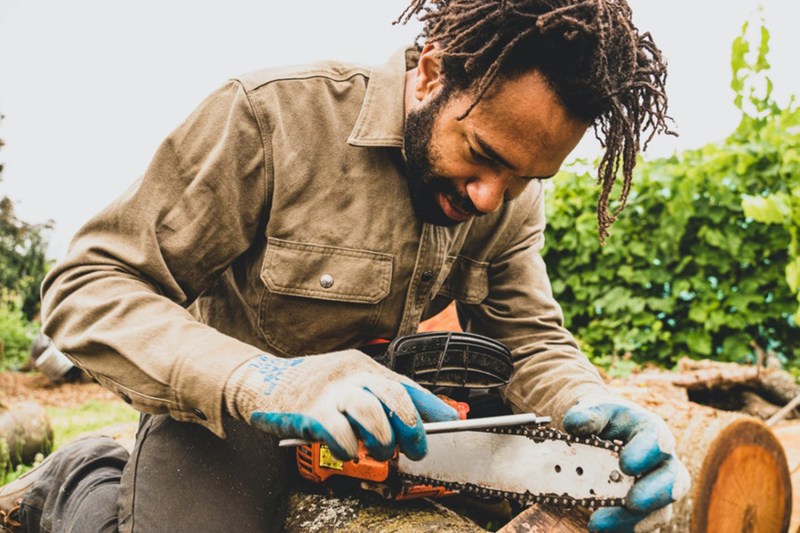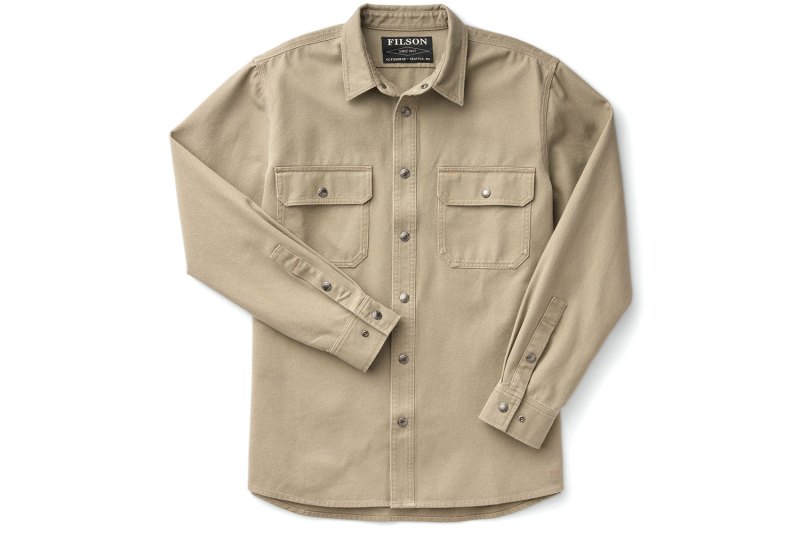
Let’s keep your seasonal ensemble simple: a work shirt.
And if you happen to be wondering, well, “what is a work shirt?” in the first place, we’re here to help. Work shirts are a choice wardrobe staple these days, adding plenty of functionality and rugged appeal — with history stretching back quite a ways, to boot. Plenty of brands, including Michigan’s Carhartt, are known for work shirts and workwear. Carhartt, for example, makes a 6.5-ounce heavyweight cotton work shirt with a small amount of stretch for mobility.
“To us, a work shirt is an overshirt that provides storage, durability, and abrasion resistance, and is made to layer over a t-shirt, sweatshirt, or whatever the environment dictates,” said Ben Ewy, Vice President of Design Research Development at Carhartt.
But let’s backtrack: You might say that ever since there’s been work that needs to be done, the work shirt has existed in some form. Work shirts really started popping up alongside workwear like denim jeans in the late 1800s, as rugged outdoorsmen, miners, and explorers alike needed a hearty outer layer to take on the elements in the Wild West and beyond.
You’ll also find work shirts in old Sears catalogs around the turn of the 20th century. Work shirts, then and now, stood out from typical dress shirts.
What’s the Difference Between a Work Shirt and a Dress Shirt?
Work shirts are made of materials like cotton canvas or cotton chambray, or occasionally, cotton flannel or brushed flannel chamois. (A note: Chambray isn’t to be confused with denim — chambray is made with a lighter, alternating weave, giving it a distinct “blue-and-white” look and texture).
These fabrics are harder-wearing than dress shirt fabric, and feel thicker to the touch. That makes the work shirt ideal for layering, all while offering protection from dirt, wind, soot, and grease (to name but a few). Dress shirts, on the other hand, are made from soft cotton materials like poplin or twill in a much tighter weave and with a much smoother finish.
Side by side, a cotton chambray work shirt is going to stick out from a classic white dress shirt. Work shirts often feature two front-button chest pockets, all the better for storing a titanium pen or a small notebook. The buttons on a work shirt are also often larger and made of thicker material than dress shirt buttons.
“It is different from a dress shirt because it is a heavier weight for durability and insulation. Dress shirts will usually have no pocket or only one pocket,” Ewy of Carhartt said. “We also like to add pen stalls, so your writing utensils have a home.”
Today’s work shirts frequently incorporate elastane into a cotton fabric blend for ease of movement.
How Should a Work Shirt Fit?
How a work shirt should fit is pretty simple: It should fit so you can do, well, work while wearing it. Think a straight cut through the body — able to be layered atop a t-shirt or a henley, buttoned or unbuttoned with ease.
It should also have a shorter hem than a dress shirt, so you can (most often) wear the work shirt untucked. A work shirt that’s too baggy through the chest and the arms does you no good, however. Think well-fitting, but not skin-tight (A good rule of thumb? Size up from your dress shirt for room to layer without going overboard).
The Modern Work Shirt
Work shirt options abound these days, as they did at the turn of the last century, but with some differences. Today’s work shirts can take on the great outdoors and the elements, yet they’re also a stylish option off-duty (or if you layer up with one as you sit and write on a chilly morning, for instance).
“The definition of work is different for every man and woman, but one thing that’s consistent is the gear they wear needs to deliver,” said Scott Zimmerman, Carhartt’s Vice President of Global Merchandising. “Every work shirt should offer … comfort, versatility, value, and the utility to tackle any job.”
So, what work shirt should you buy now? We rounded up a few picks below.
The Best Work Shirt for Men
Filson Canvas Workshirt

A classic example of a rugged work shirt from a heritage Pacific Northwest brand. Filson crafts this work shirt with a tough, thick 10-oz. cotton canvas fabric and metal snap buttons for added durability. It’s tough as nails and ready to be layered atop a Filson thermal shirt on chilly mornings.


